Showing 41–48 of 61 Products [Q A E ]
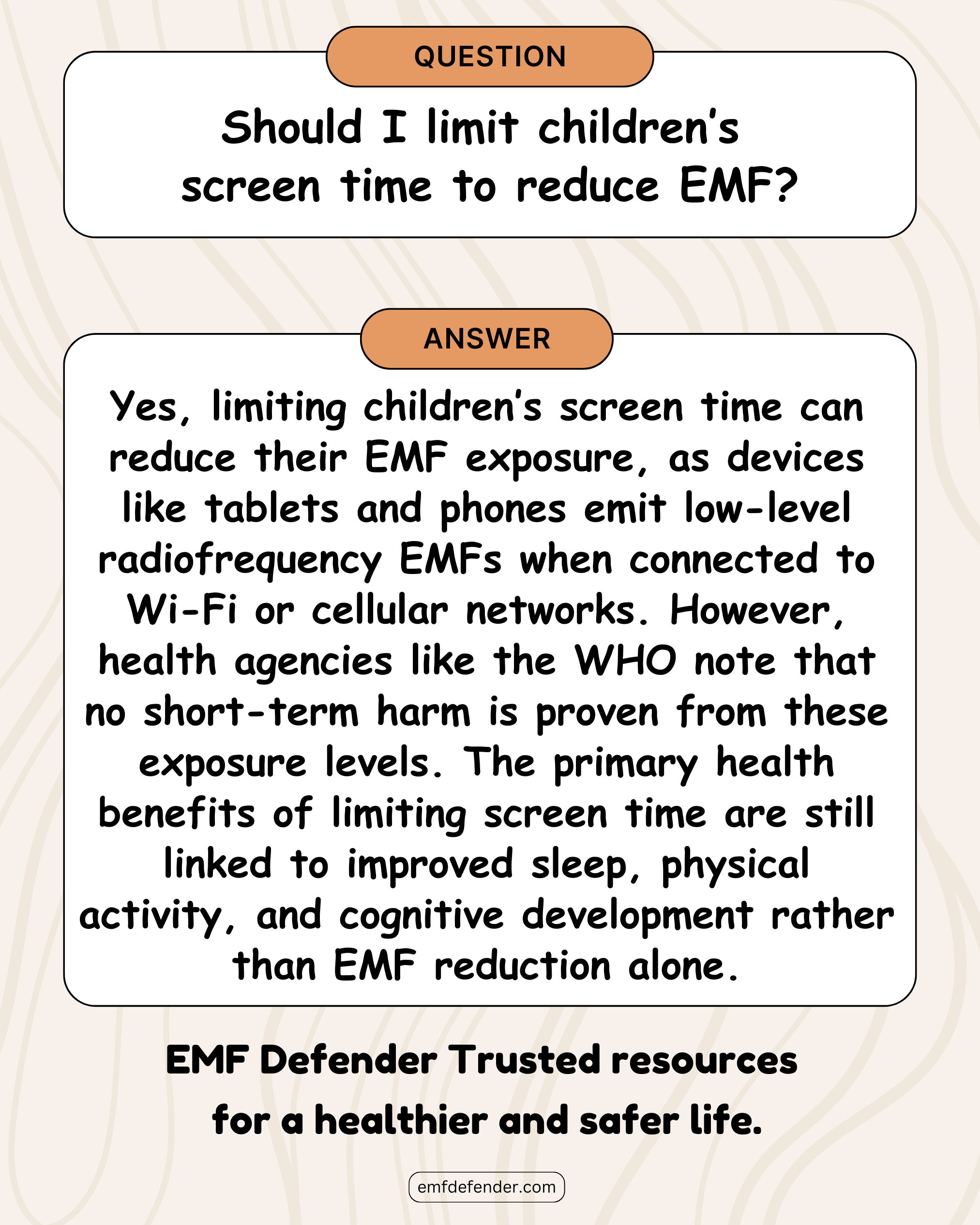
Should I limit children’s screen time to reduce EMF?
Yes. Reducing children’s screen time can lower their EMF exposure, since phones and tablets emit low-level radiofrequency EMFs when connected to Wi-Fi or cellular networks. That said, organizations like the WHO report no confirmed short-term harm from these levels. The more important benefits of limiting screen time include better sleep, more physical activity, and stronger cognitive development. So, while EMF reduction is a factor, the overall health gains from screen limits are much broader and more impactful.
Additional Information:
..
Additional Information:
..
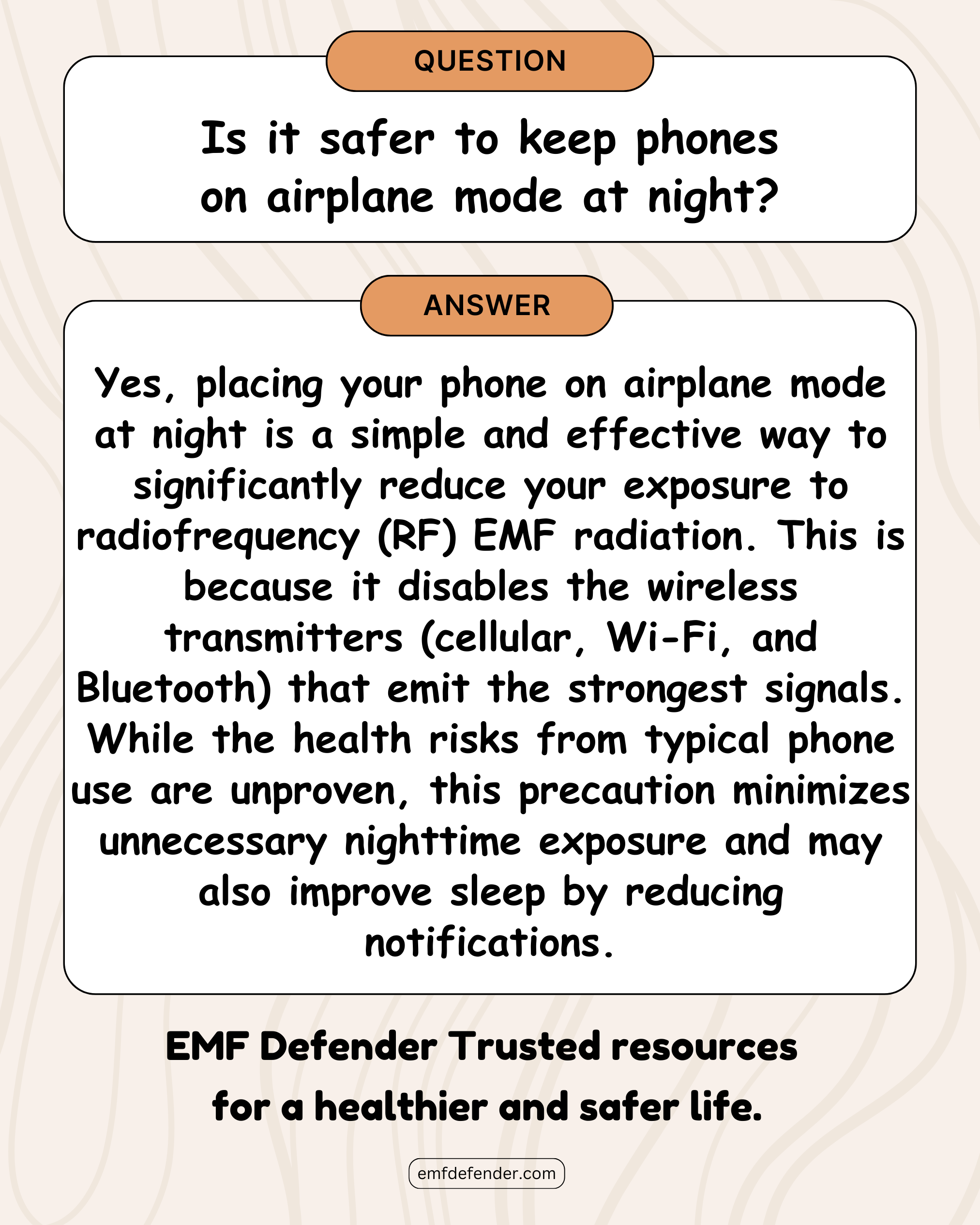
Is it safer to keep phones on airplane mode at night?
Yes. Setting your phone to airplane mode at night is a simple way to reduce exposure to radiofrequency (RF) EMFs. This mode disables wireless transmitters such as cellular, Wi-Fi, and Bluetooth, which emit the strongest signals. While no conclusive evidence links normal phone use to health risks, reducing unnecessary nighttime exposure is a sensible precaution. It can also improve sleep quality by limiting digital interruptions like notifications, helping create a calmer, healthier nighttime environment.
Additional Information:
..
Additional Information:
..
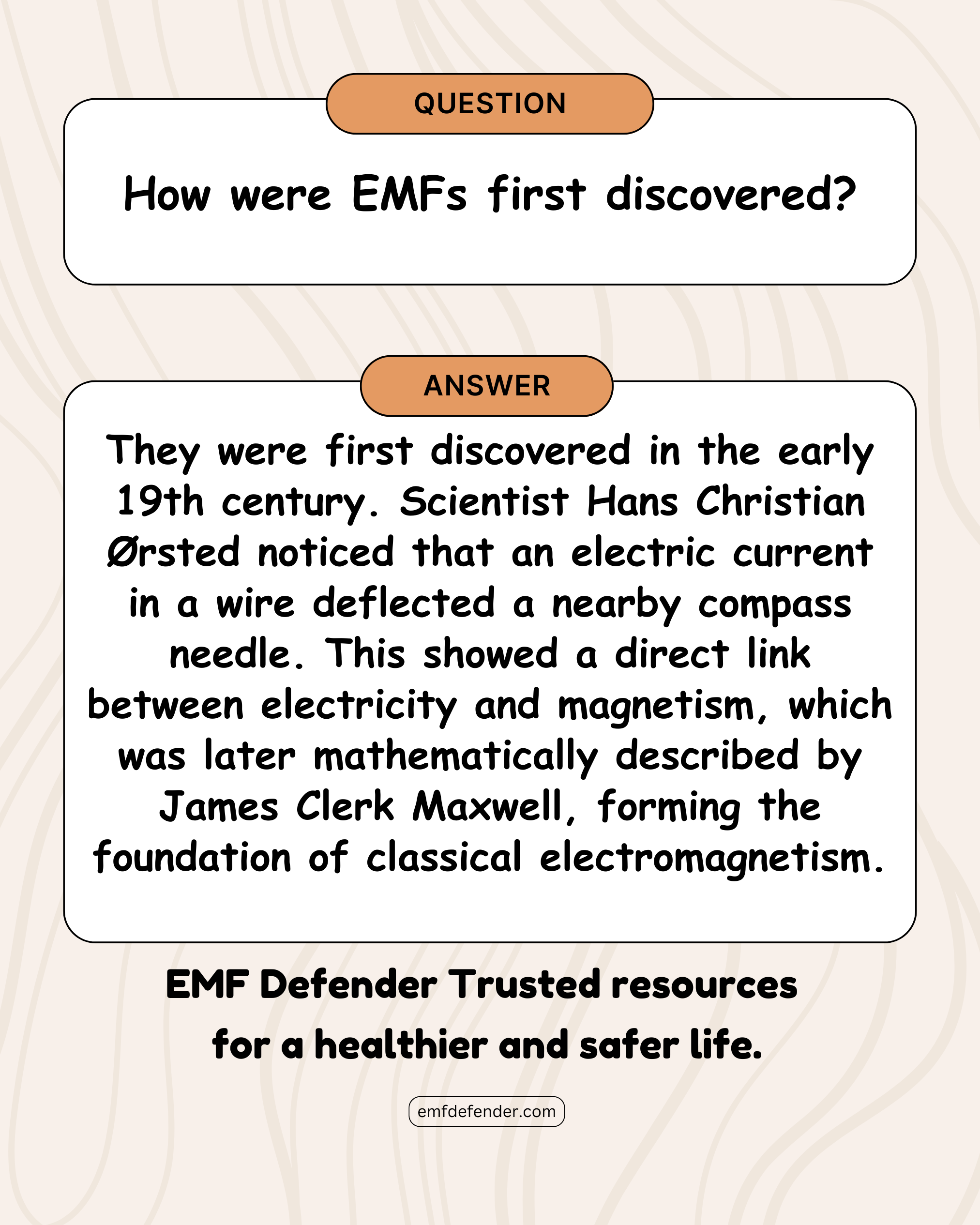
How were EMFs first discovered?
Electromagnetic fields were first discovered in the early 19th century. In 1820, physicist Hans Christian Ørsted observed that an electric current in a wire could deflect a nearby compass needle, revealing a connection between electricity and magnetism. This groundbreaking finding led to the development of classical electromagnetism, later mathematically described by James Clerk Maxwell. Their combined work laid the foundation for modern physics and our understanding of how EMFs function in both nature and technology.
Additional Information:
..
Additional Information:
..
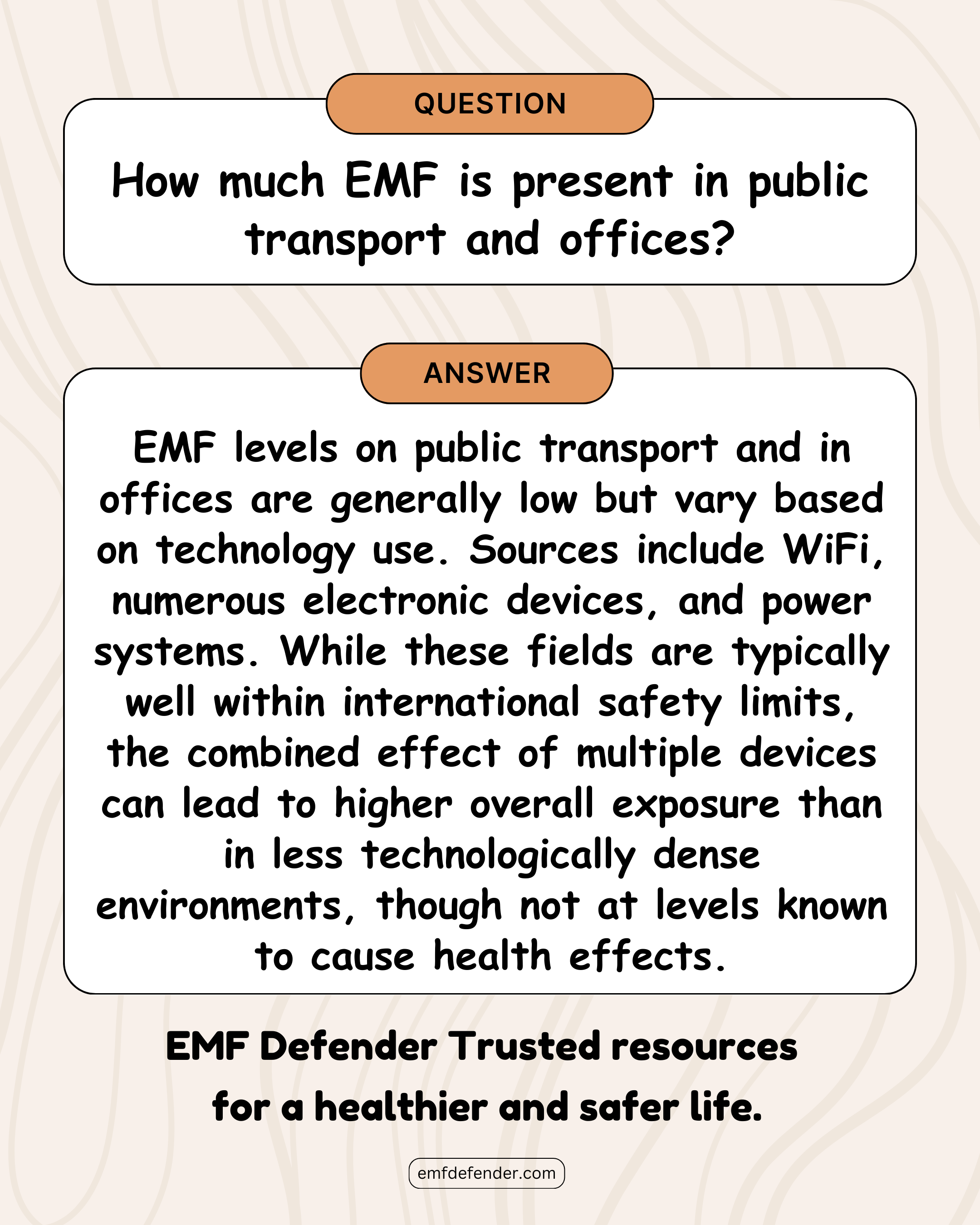
How much EMF is present in public transport and offices?
EMF levels in public transport and office environments are generally low but vary depending on the amount of technology in use. Common sources include Wi-Fi networks, electronic devices, lighting, and power systems. Although these fields typically remain well within international safety limits, the combined effect of many active devices in close proximity can lead to higher exposure compared to less technology-heavy settings. Even so, these levels are not considered harmful according to current scientific evidence and safety guidelines.
Additional Information:
..
Additional Information:
..
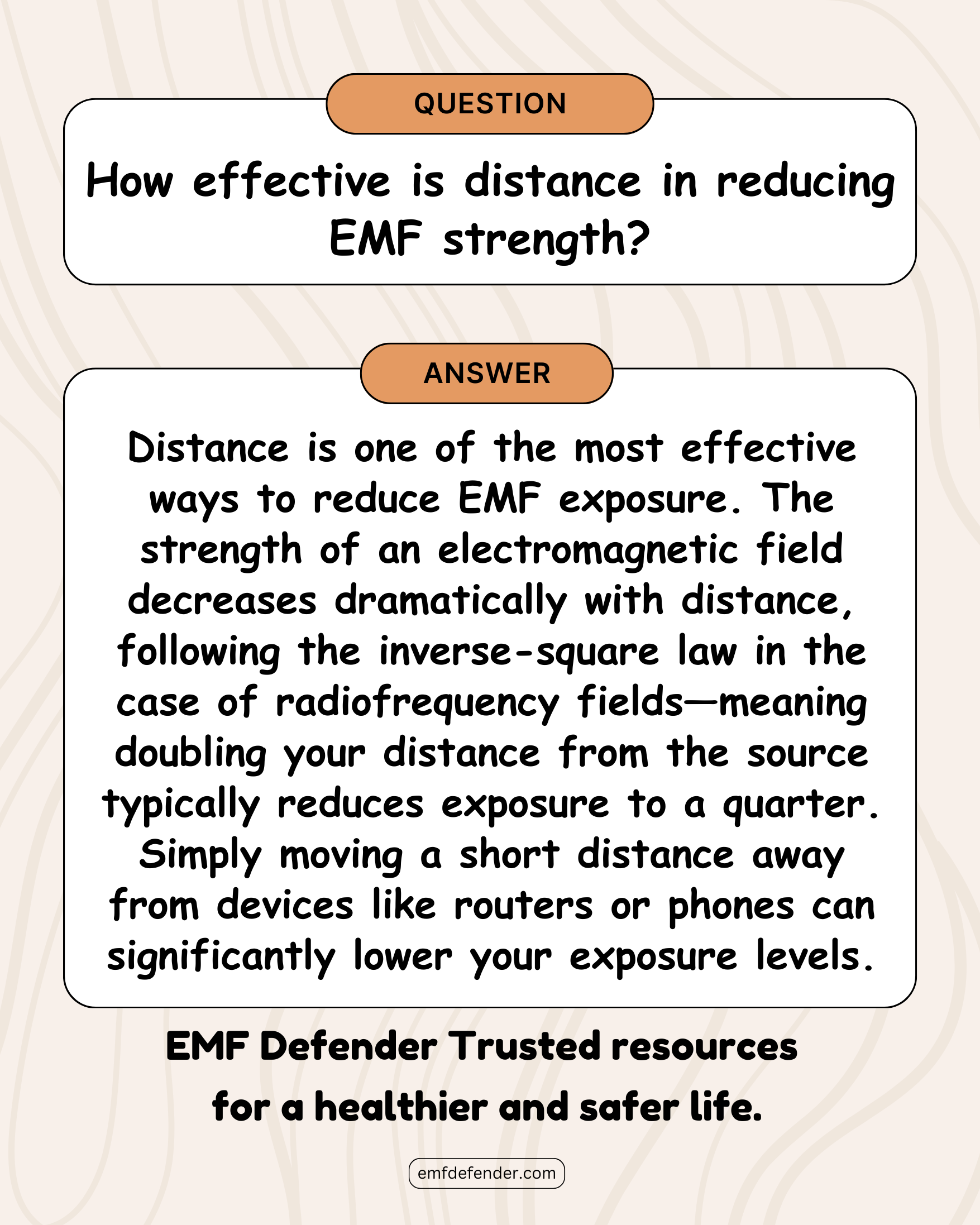
How effective is distance in reducing EMF strength?
Distance is one of the simplest and most effective ways to reduce EMF exposure. The strength of electromagnetic fields drops sharply as you move away from the source, following the inverse-square law—meaning that doubling your distance can reduce exposure to one-quarter. Even small shifts, like moving your phone or Wi-Fi router a few feet farther away, can significantly lower your overall exposure levels without requiring special equipment or complex solutions.
Additional Information:
..
Additional Information:
..
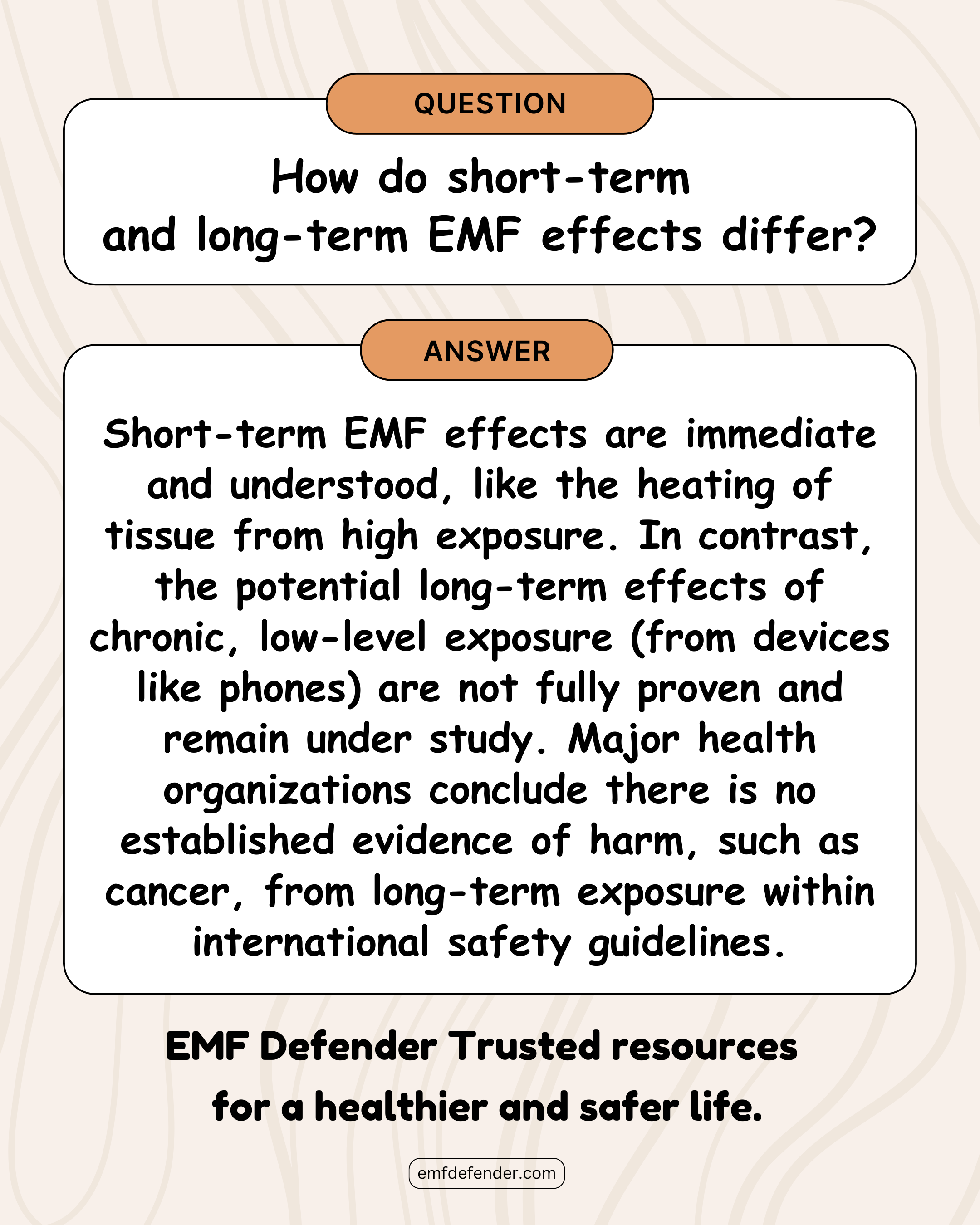
How do short-term and long-term EMF effects differ?
Short-term EMF effects are well understood and occur immediately, such as tissue heating from high-intensity exposure. Long-term effects from chronic, low-level exposure—like daily use of phones or Wi-Fi—are less certain and remain the subject of ongoing research. Current scientific consensus, supported by major health organizations, finds no established evidence linking typical long-term EMF exposure within safety limits to serious conditions like cancer. Research continues, but present data indicates everyday exposure remains within safe boundaries.
Additional Information:
..
Additional Information:
..
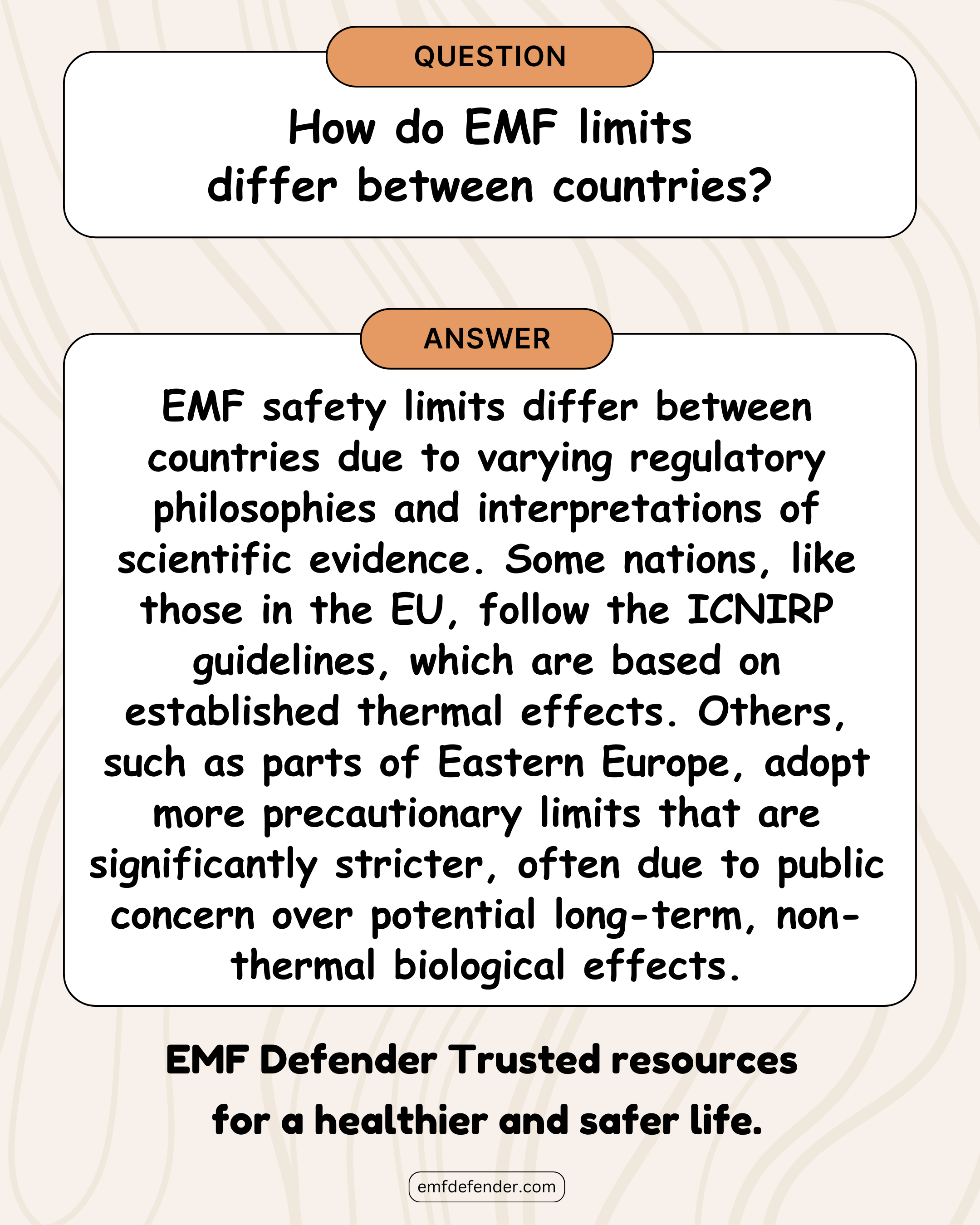
How do EMF limits differ between countries?
EMF safety limits vary worldwide because of different regulatory approaches and interpretations of scientific data. Many countries, such as those in the EU, follow ICNIRP guidelines, which are based on proven thermal effects of EMFs. Other regions, including parts of Eastern Europe, apply stricter precautionary limits due to heightened public concern about possible long-term, non-thermal biological impacts. These differences highlight how cultural attitudes, scientific evaluation, and policy priorities shape national EMF regulations.
Additional Information:
..
Additional Information:
..
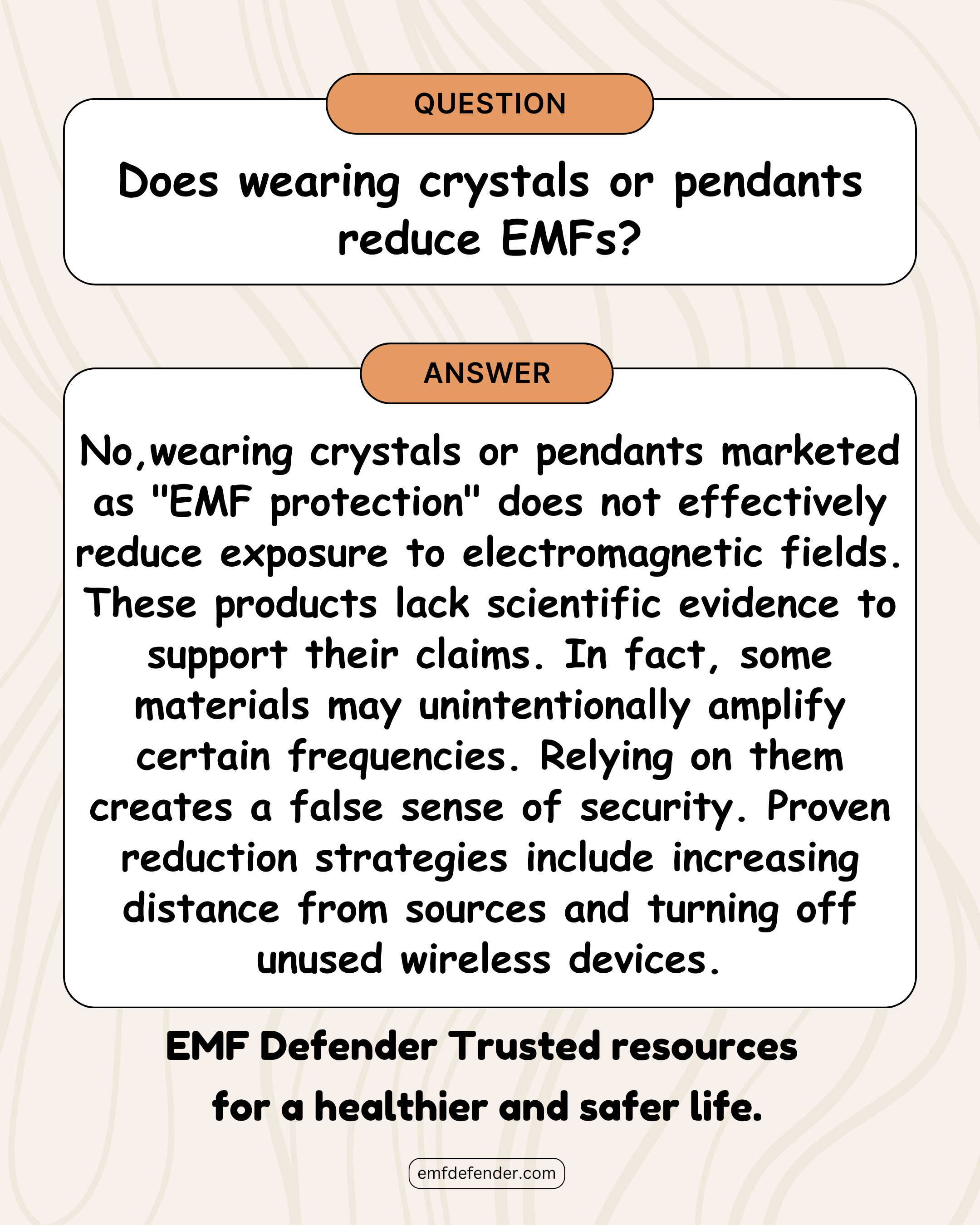
Does wearing crystals or pendants reduce EMFs?
No. Wearing crystals or pendants marketed as “EMF protection” does not effectively reduce exposure to electromagnetic fields. These claims are not supported by scientific evidence, and in some cases, certain materials could even amplify specific frequencies. Relying on such products can create a false sense of security. Effective and proven ways to lower EMF exposure include practical measures such as keeping distance from high-emission devices and switching off unused wireless equipment.
Additional Information:
..
Additional Information:
..